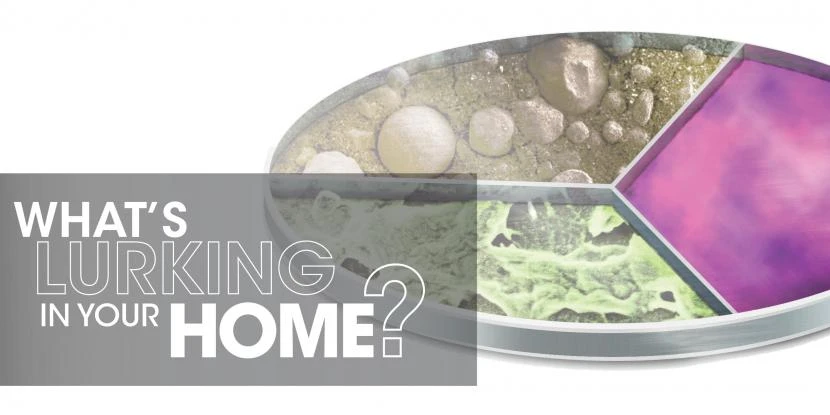
You probably spend a majority of your time inside. Much of this time is spent at home, specifically on the weekends and when you sleep at night. Are you aware of the dangers lurking in your home’s air? Contaminants could cause you to develop an infection, cancer or lung disease. At the very least, they can cause headaches and nausea or irritate your eyes, nose and throat. Learn about the top five dangers in your home’s air and some of the best ways to keep indoor air healthy.
Biological Contaminants
Many types of living organisms can promote poor indoor air quality. These include:
- mould
- Bacteria
- Viruses
- Pollen
- Pet dander
- Dust mites
- Cockroaches
Many of these irritants are microscopic, but they can wreak havoc on your respiratory and immune systems. Biological contaminants are a major reason for missed days at work or school and visits to the hospital.
Combustion Fumes
Many appliances found within your home run on gas, oil, coal or another combustion fuel. These may include:
- Fuel-burning stoves
- Furnaces
- Water heaters
- Fireplaces
- Space heaters
As combustion fuels burn, they produce heat and dangerous gases including carbon monoxide. These fumes must be vented to the exterior to prevent contaminating indoor air. Leaks can cause dangerous carbon monoxide poisoning, which can be fatal.
Secondhand Smoke
Cigarette smoke contains 200 known poisons and at least 60 carcinogens. In the US, an estimated 3,000 nonsmokers die each year from lung cancer and 50,000 of heart disease caused by secondhand smoke. Children are prone to developing pneumonia, ear infections and lower respiratory tract infections when exposed to secondhand smoke. It can also cause asthma to develop in children or worsen existing asthma symptoms.
To reduce the amount of secondhand smoke inside your home, first of all, quit smoking if you have this habit. Then don’t allow others to smoke in your home.
Radon
This naturally occurring radioactive gas rises from the soil. The gas can enter your home through cracks in the foundation, walls, drains and other openings. Radon is the second leading cause of lung cancer after smoking and causing 21,000 deaths in the US every year. A radon testing kit is the best way to detect high radon levels and find out if you need to take steps to direct this gas out of your home.
Volatile Organic Compounds
Also called VOCs, these compounds include a variety of chemicals including formaldehyde and benzene. Sources include:
- Paints and stains
- Pressed wood products
- Aerosol sprays
- Household cleaners and disinfectants
- Air fresheners
- Automotive parts
- Building materials and furnishings
- Copiers and printers
Short-term exposure to VOCs can cause eye and nose irritation, headaches, allergic skin reactions, and nausea. Prolonged exposure can cause liver and kidney damage, cancer, and central nervous system impairment. The best way to limit VOCs is to shop for low- or no-VOC products.
How to Keep Indoor Air Healthy
- Ventilate: Circulate outdoor air inside to dilute pollutants and help you breathe easier. On nice days, this might simply mean opening a window. Exhaust fans and whole-house ventilation provide circulation when and where you need it most.
- Dehumidify: Excess moisture is a major cause of biological contaminants. Keep them at bay by running a dehumidifier in the summer when humidity levels climb.
- Maintain: Hire a technician to check your combustion appliances regularly for safe operation.
- Clean: Keep on top of weekly chores such as vacuuming, dusting and sweeping to remove contaminants from the surfaces in your home. Have the air ducts cleaned periodically as well.
To schedule air quality services, or for more tips to clean your indoor air, please contact Aire Serv®.

